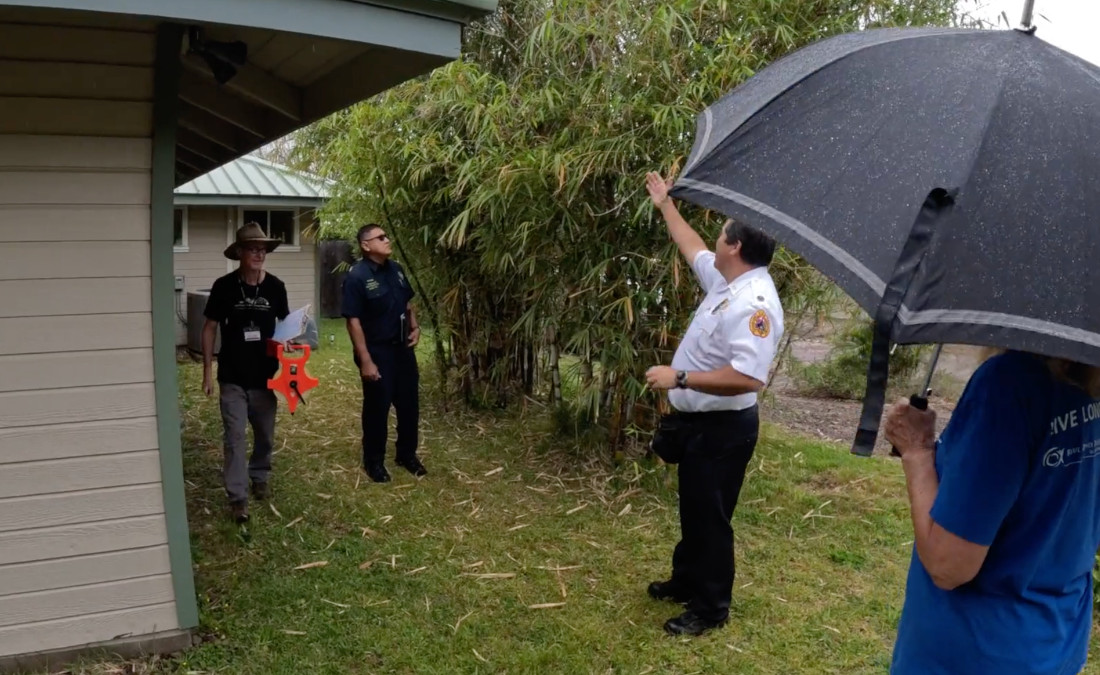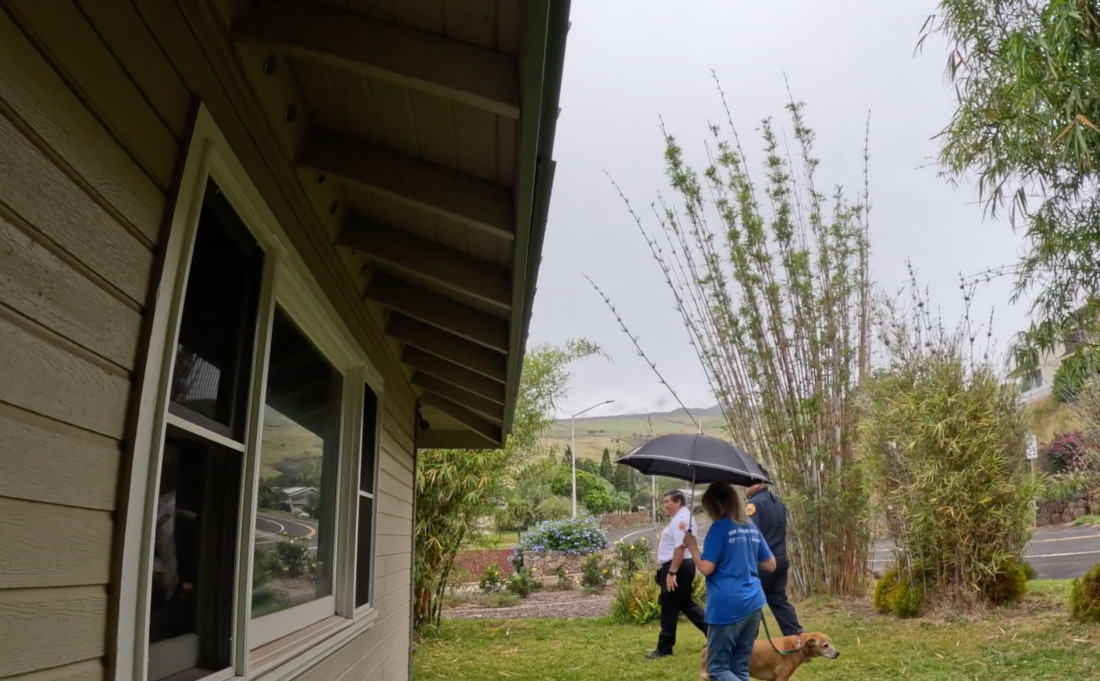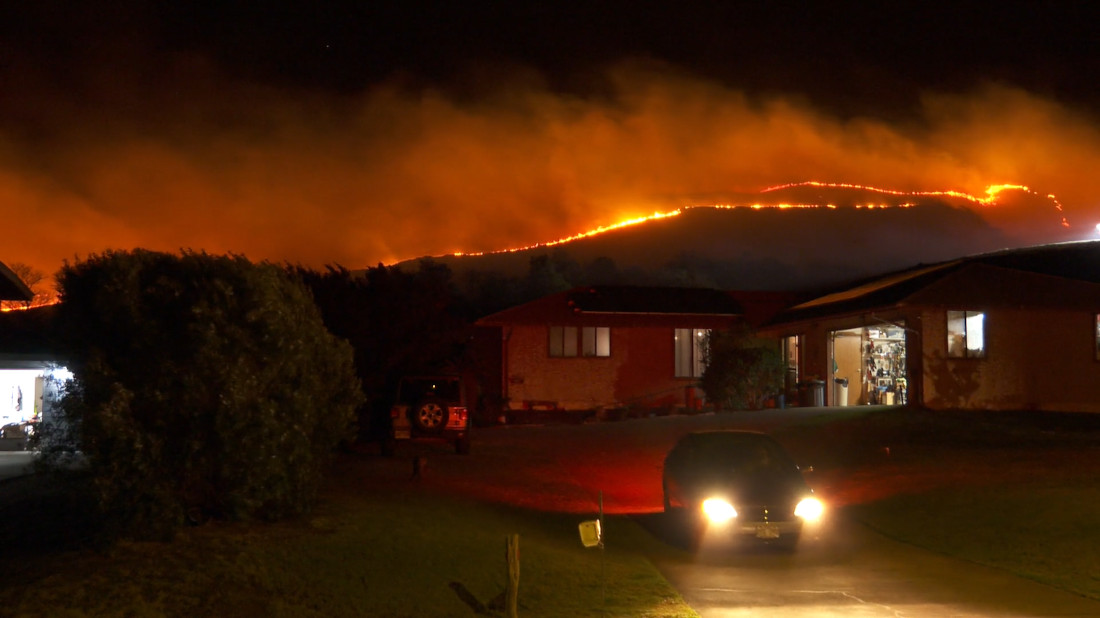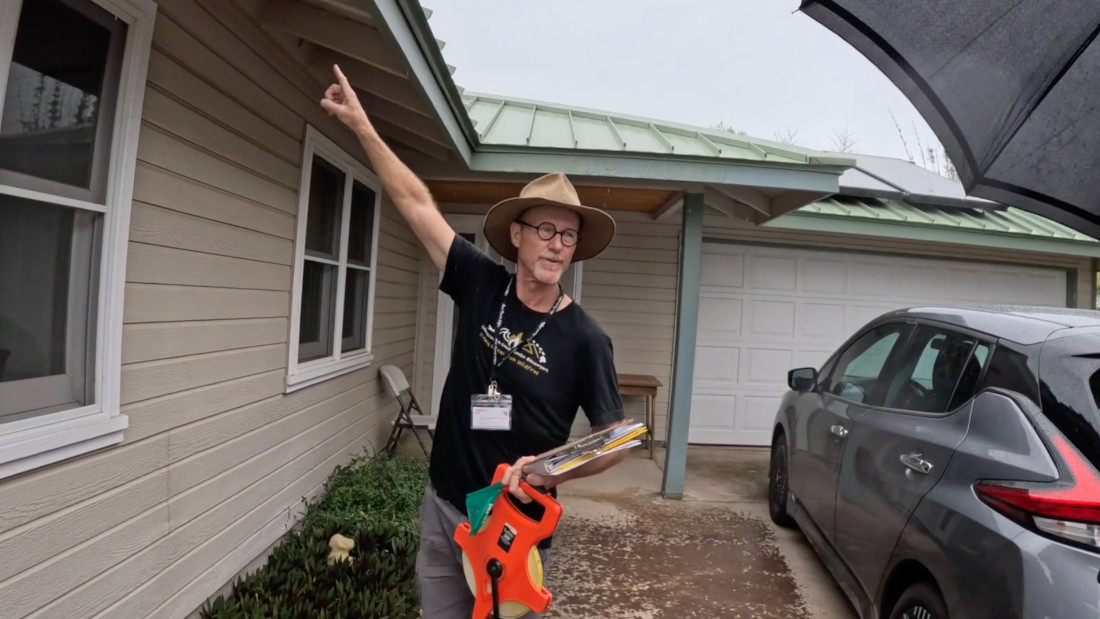(BIVN) – On the same day that firefighters battled a blaze in the Paʻauilo area of Hāmākua, the State of Hawai‘i let residents know that hundreds of homeowners can benefit from a free wildfire hazard assessment.
From a news release by the Hawai‘i Department of Land and Natural Resources:
If you look at the Kamuela View Estates neighborhood just on the outskirts of Waimea, it’s hard to imagine it could be threatened by wildfire. Yet nearly three years-ago, a fast-moving fire swept down the denuded slopes on the lower flanks of the Kohala mountains.
Images captured by Lynn Beittel, a professional videographer who lives in the subdivision, show the wind-whipped fire’s speed and worried homeowners fearing their homes could burn. Around the state there are hundreds of homes in what is known as the urban/wildfire interface. This means, they are particularly at risk to wildfires.
Fast-forward and enter Mike Schorr, one of 14 trained home fire risk assessors, currently working on four islands: Hawai‘i Island, Maui, Moloka‘i, and O‘ahu. Last fall, Schorr and the other volunteers took training to assess the vulnerability to wildfire or ember-ignition to a house or surrounding landscape.
One recent morning, Schorr and representatives from the Hawai‘i County Fire Dept. (HFD) showed up at Cherrie Carse’s ranch-style home to spend less than an hour walking around the house and yard to conduct a free wildfire home assessment.
“Really what we’re looking for is anything that might be combustible. A flame can reach two and a half times the height of whatever it is that might be burning below it. So that means if you had a plant that was so high, you can expect that flame to be another two and a half times higher and that would put the structure at risk,” Schorr explained.
Homeowners receive fire-ready information and within a few weeks a complete assessment report. For the most part, the Carse home appeared to be fairly safe from flying embers or other ignition sources.
HFD Asst. Fire Chief Darwin Okinaka noted a potential issue behind the house. “The other thing is storage next to the home. This is a metal box so it’s not too bad, but you have wood that it’s sitting on. That is somewhat of a concern. So, if you could pull it out, that’s good.”
First-preference for home assessments is given to homeowners living in nationally recognized Firewise® USA communities, followed by those in up-and-coming Firewise areas, followed by those living around a Firewise community. The program is funded by grants and will continue as long as funding is available.
Last year, wildland fires burned more than 19,000 acres in two large fires: one on Maui, the other on Hawai‘i Island.
Nani Barretto, the co-executive director of the Hawai‘i Wildfire Management Organization (HWMO) said, “Numerous neighborhoods, including Waikoloa Village, Lāhainā, and Launiupoko, were threatened. We know there are literally hundreds of homes around the state that could benefit from a risk assessment.”
Homeowners are under no obligation to institute any of the improvements. HWMO will analyze any barriers to completion a homeowner might encounter and determine if there are incentive programs available to enhance ignition-resisting improvements.
Mike Walker, State Protection Forester, with the DLNR Division of Forestry and Wildlife (DOFAW) remarked, “Not all fires start on lands under our jurisdiction, but all firefighting agencies, including DOFAW, place emphasis on protecting life and property. Anything that can be done to make homes more resistant to fires is assuredly a good thing.”





by Big Island Video News1:19 pm
on at
STORY SUMMARY
WAIMEA, Hawai‘i - Homeowners living in nationally recognized Firewise® USA communities are given first-preference for the service, officials say.